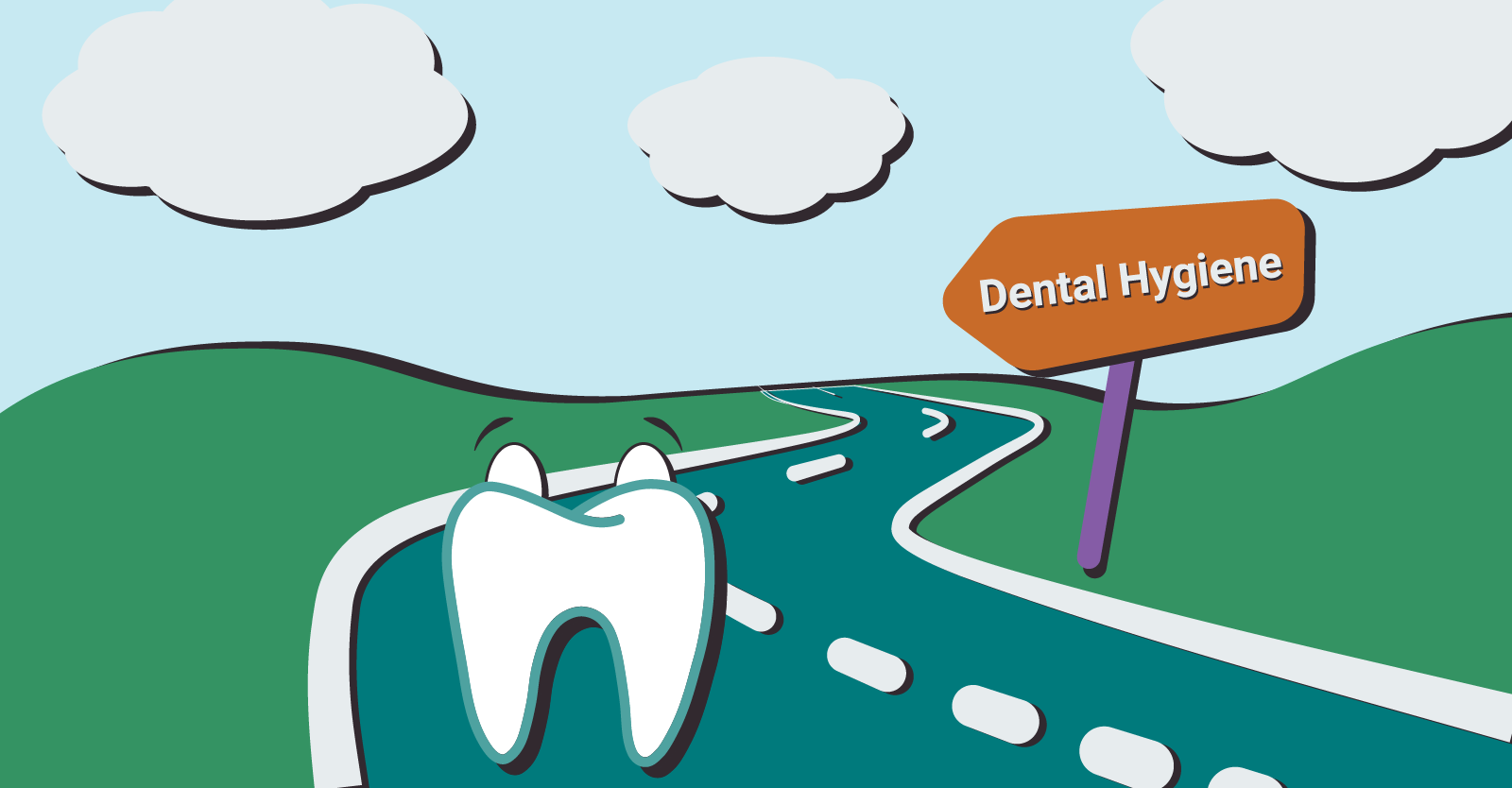It is time to celebrate! National Dental Hygienist Week is the second week of April each year (April 4-10). During this week, NCOHC wants to celebrate the students excited about becoming future registered dental hygienists. This is the time of year potential dental hygiene students are preparing and submitting applications and anxiously awaiting acceptance letters. Let’s explore the process prospective dental hygiene students must go through to prepare and apply to a dental hygiene program and the road they travel to become dental hygienists.

Dental Hygiene Programs
North Carolina has thirteen Commission on Dental Accreditation (CODA) approved dental hygiene programs. These include 12 Associate of Applied Science degree programs at community colleges throughout the state and one baccalaureate program at the University of North Carolina Adams School of Dentistry.
For dental hygienists to practice in North Carolina, they must graduate from a CODA-approved dental hygiene program. CODA is the sole agency that accredits dental and dental-related education programs and is nationally recognized by the United States Department of Education (USDE).
Dental hygiene programs must go through accreditation — a rigorous self- and peer-reviewed process — every seven years to ensure they provide a quality education and comply with CODA’s Accreditation Standards and Commission Policies.
Prerequisite Admission Requirements
The education process for a dental hygienist is quite extensive. Before being accepted into a CODA-approved dental hygiene program, it is strongly recommended that students complete required general education/dental hygiene prerequisite courses due to the rigorous nature of the dental hygiene curriculum.
Prerequisite courses for dental hygiene programs include but are not limited to:
- anatomy and physiology (one or two courses)
- microbiology
- chemistry (class and lab)
- communications
- English (two courses)
- math
- psychology
- sociology
- a humanities/fine arts elective (i.e., critical thinking)
These courses can take a student a year or two to complete prior to being accepted into a hygiene program.
Dental Hygiene Program Admission Process
Admission into dental hygiene programs is very competitive due to the limited number of students each program accepts. For example, 80-100 students may apply to a dental hygiene program that only has 20-30 seats available.
The selection process is usually based on a point system. Points are awarded for specific requirements, including but not limited to:
- general education/dental hygiene prerequisite courses (more points will be assigned for an A earned in a course vs. a B or C)
- high school or college GPA
- the Assessment Technologies Institute (ATI) Test of Essential Academic Skills (TEAS) score
- completion of a dental assistant program and/or dental assistant work experience
Applicants with the highest number of points are admitted into the program.
Dental Hygiene Curriculum and Program Requirements
After being accepted into a dental hygiene program, students begin an intensive two-year program that requires them to complete traditional classroom and hands-on clinical coursework with a grade of “B” or better.
The dental hygiene curriculum includes:
- orofacial anatomy
- infection/hazard control
- medical emergencies
- preclinic lecture and lab
- dental radiography
- general and oral pathology
- periodontology
- nutrition/dental health
- dental pharmacology
- community dental health
- dental materials and procedures
- professional development
- dental hygiene theory courses
- clinical courses throughout the program
In clinical courses, students are required to treat patients in dental hygiene clinics located on their school’s campus. They learn to manage and treat patients’ needs and provide preventive oral health care.
When I was the program director for Catawba Valley Community College’s dental hygiene program, dentists and even one pharmacist were constantly surprised to learn about the rigorous nature of hygiene programs. One dentist told me that she wasn’t aware of the extensive knowledge hygienists gain in school, and teaching our students gave her even more respect for dental hygienists.
Examinations and Licensure
During the last semester of dental hygiene school, students apply for and complete national and regional exams and begin the licensure requirements. The National Board of Dental Hygiene Examination (NBDHE) is an eight-hour comprehensive exam administered by the Joint Commission on National Dental Examinations (JCNDE).
Exam Requirements for Dental Hygienists in North Carolina
There are state-specific exam requirements for dental hygiene students, as well. In North Carolina, dental hygiene students take the American Board of Dental Examiners (ADEX) exam administered by the Council of Interstate Testing Agencies (CITA), a regional testing agency. The ADEX exam consists of two components – the Patient Treatment Clinical Exam (PTCE) or the Manikin Treatment Clinical Exam (MTCE) and the Computer Simulated Clinical Examination (CSCE).
Licensure
After students complete the national and regional examinations, they must complete a North Carolina State Board of Dental Examiners (NCSBDE) licensure application. The application process requires completing an extensive application, a background check, a nominal licensure fee, a passing score on the NBDHE and CITA exams, and successful completion of the Infection Control/Sterilization and Jurisprudence examinations.
Finally…a Registered Dental Hygienist
The NCSBDE issues a candidate a dental hygiene license once their application is completed and approved. At last, the dental hygiene student has earned the status of a Registered Dental Hygienist!
NCOHC, a program of the Foundation for Health Leadership & Innovation, works to advance systems-level changes, improving the overall health and well-being of all North Carolinians by increasing access and equity in care. To stay up-to-date and get involved, join us today as a North Carolinian for Change.


